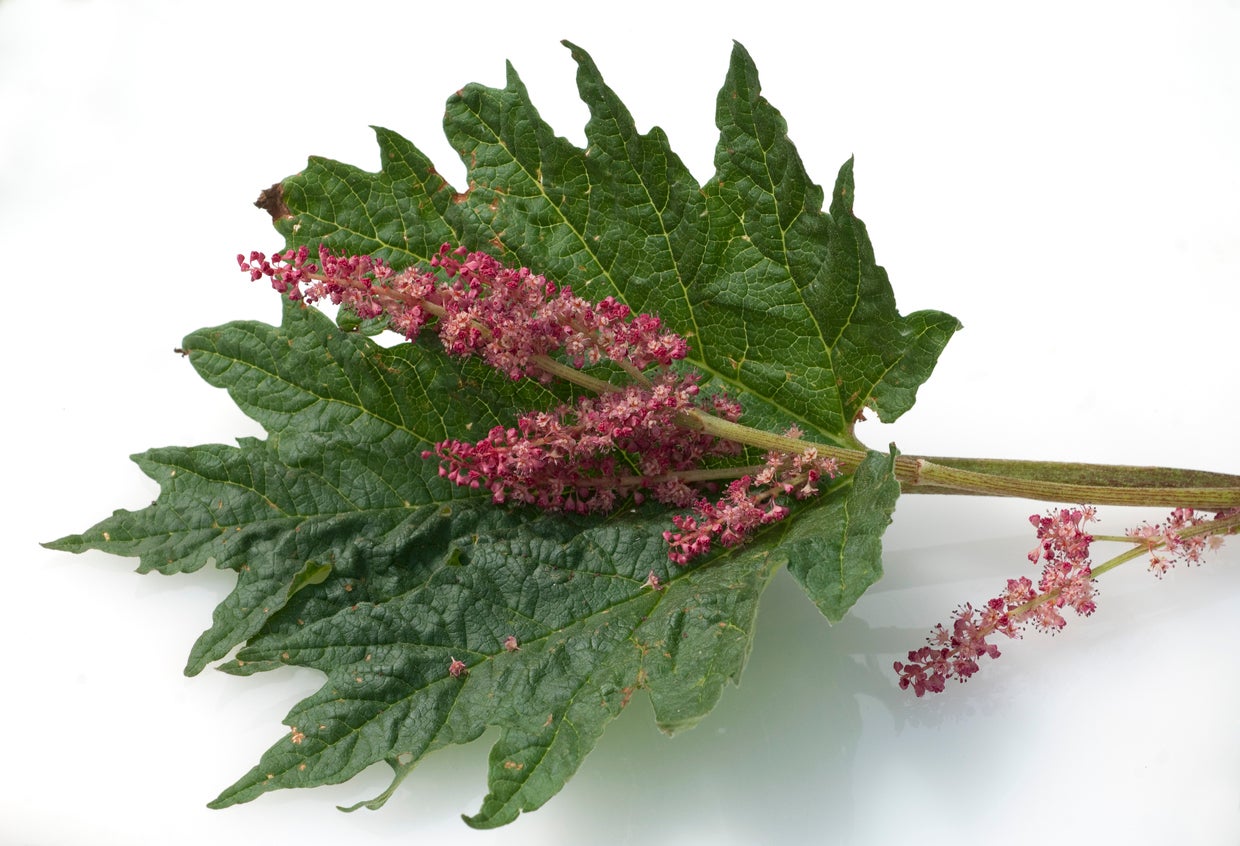Ornamental Rhubarb Care: How To Grow A Chinese Rhubarb Plant


Growing ornamental rhubarb adds an attractive specimen to a mixed border in the landscape. Large, interesting leaves grow basally and have a reddish bronze underside in summer. The plant has interesting pink, white, and purple blooms (panicles) as well. When combined with medium and small foliage of other plants, the Chinese rhubarb plant (Rheum palmatum) makes a statement in your landscape.
What is Chinese Rhubarb?
You’ve likely heard of rhubarb but may not be familiar with its uses. Rhubarbs are of the buckwheat family and are a diverse group of plants. There are several rhubarb varieties, but this one is botanically called Rheum palmatum var. tanguticum. It is related to the edible rhubarb (Rheum rhabarbarum), sometimes referred to as R. xhybridum or R. xcultorum.
Can you eat Chinese rhubarb? No. This rhubarb variety is largely ornamental. The Chinese attempted eating the leaves over 5,000 years ago when they utilized the plant for medicinal properties. However, the oxalic acid in the leaves can create problems when consumed in quantity and was often found to be toxic.
Sources say this is the “most pleasing” of the ornamental rhubarbs. So if you’re looking for a showstopping plant or focal point, or if you are in need of something near your pond or water feature, this is a great choice.
How to Grow Chinese Rhubarb
Ornamental rhubarb care starts with choosing the right sunny spot. If you have a spot that retains moisture well and has rich soil, it is likely a good place for planting. If not, find the right sunny spot and be prepared to water regularly.
An attractive covering of mulch helps retain moisture and keep roots cool in summer. This attractive, sprawling specimen does not like heat on the roots in summer.
Multiplying from a single plant is possible by seed or division, called splitting. Splitting is a way to refresh older plants that have slowed in performance because of age. You may take pieces of mature root systems, and then transplant, water and fertilize these for more plants. Don’t divide plants that have been in the ground less than three years, however.
Sign up for the Gardening Know How newsletter today and receive a free copy of our e-book "How to Grow Delicious Tomatoes".

Becca Badgett was a regular contributor to Gardening Know How for ten years. Co-author of the book How to Grow an EMERGENCY Garden, Becca specializes in succulent and cactus gardening.